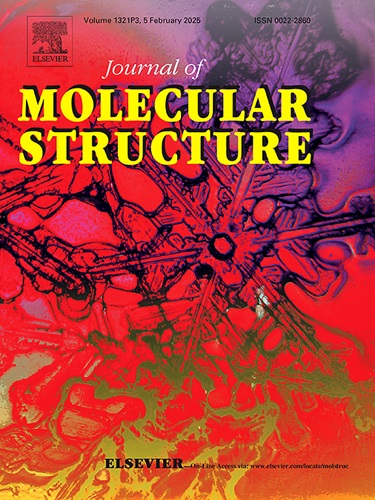纳米Bi2O3CeO2对非那氮吡啶光降解增强活性的研究简要比较了几种耦合策略的效果
IF 4
2区 化学
Q2 CHEMISTRY, PHYSICAL
引用次数: 0
摘要
在本研究中,采用一些策略制备了Bi2O3/CeO2二元偶联体系,并研究了它们在提高非那氮吡啶光降解光催化活性中的作用。在第一种途径中,将单个Bi2O3和CeO2纳米颗粒(NPs)机械混合在玛瑙砂浆(MMix样品)中。在第二种途径中,将同样制备的MMix样品分散在正己烷中,并在37 MHz超声下蒸发15 min,然后蒸发溶剂(Ultra-MMix)。在第三条途径中,在上述条件下,在Bi2O3 + CeO2 NPs (Ultra-M样品)的混合物上制备超声样品。最后,在第四个样品中,通过沉淀法(Co-Pre)制备了二元催化剂。采用粉末XRD、FTIR、SEM、UV-Vis DRS等技术对样品进行表征。Scherrer和Williamson-hall方程都确定了样品的晶体尺寸,符合晶体的纳米尺寸。DRS结果表明,与单独的Bi2O3相比,集成系统的带隙相对减小。在光降解实验的第一步,对MMix和Co-Pre催化剂在PZP溶液中的活性进行了评估,揭示了单个Bi2O3和CeO2 NPs的活性提高。由于MMix比Co-Pre催化剂具有更高的活性,对影响其光降解PZP活性的关键因素进行了优化,得到了Bi2O3:CeO2摩尔比为1:1、CPZP: 2 ppm、催化剂体积:0.4 g/L、pH: 5、光照时间为90 min的耦合催化剂的最佳条件。拟一级动力学模型描述了过程动力学。还对清除试剂的效果进行了评价,以估计活性物质在去除PZP中的相对作用。因此,光致空穴和超氧自由基在PZP光降解过程中表现出较高的相对作用。简要比较了几种制备根对偶联催化剂光催化活性的影响。本文章由计算机程序翻译,如有差异,请以英文原文为准。
A study on the boosted activity of the Bi2O3CeO2 nanoparticles toward phenazopyridine photodegradation; A brief comparison of the effects of some coupling strategies
In the present study, some strategies were applied to fabricate binary coupled Bi2O3/CeO2 systems and their roles in the boosted photocatalytic activity against the photodegradation of phenazopyridine. The individual Bi2O3 and CeO2 nanoparticles (NPs) were mechanically mixed in agate mortar (MMix sample) in the first pathway. In the second pathway, the same prepared MMix sample was dispersed in n-hexane and ultrasonicated at 37 MHz for 15 min, and then the solvent evaporated (Ultra-MMix). In the third pathway, an ultrasonicated sample was prepared under the above-mentioned conditions on a mixture of Bi2O3 + CeO2 NPs (Ultra-M sample). Finally, in the fourth sample, the binary catalyst was prepared via a precipitation procedure (Co-Pre). Some techniques like powder XRD, FTIR, SEM, and UV–Vis DRS were used to characterize the samples. Both Scherrer and Williamson-hall equations determined the crystallite size of the samples, conforming to the nano dimension for the crystals. DRS results showed a relative decrease in band gaps of the integrated systems compared to Bi2O3 alone. In the first initial steps of the photodegradation experiments, the activity of MMix and Co-Pre catalysts were evaluated against the PZP solution, revealing a boosted activity concerning the individual Bi2O3 and CeO2 NPs. Due to the relatively higher activity of the MMix than the Co-Pre catalyst, the influences of the critical factors on its activity in the PZP photodegradation amount were optimized, and the optimal conditions of a Bi2O3:CeO2 molar ratio of 1:1 for the coupled catalyst, CPZP: 2 ppm, catalyst doe: 0.4 g/L, pH: 5, and illumination time of 90 min were reached. The pseudo-first-order kinetic model described the process kinetics. The effects of the scavenging reagents were also evaluated to estimate the relative role of the reactive species in PZP removal. Accordingly, the photoinduced holes and superoxide radicals showed higher relative roles in PZP photodegradation. A brief comparison on the effect of some fabrication roots in the photocatalytic activity of the coupled catalyst was applied.
求助全文
通过发布文献求助,成功后即可免费获取论文全文。
去求助
来源期刊

Journal of Molecular Structure
化学-物理化学
CiteScore
7.10
自引率
15.80%
发文量
2384
审稿时长
45 days
期刊介绍:
The Journal of Molecular Structure is dedicated to the publication of full-length articles and review papers, providing important new structural information on all types of chemical species including:
• Stable and unstable molecules in all types of environments (vapour, molecular beam, liquid, solution, liquid crystal, solid state, matrix-isolated, surface-absorbed etc.)
• Chemical intermediates
• Molecules in excited states
• Biological molecules
• Polymers.
The methods used may include any combination of spectroscopic and non-spectroscopic techniques, for example:
• Infrared spectroscopy (mid, far, near)
• Raman spectroscopy and non-linear Raman methods (CARS, etc.)
• Electronic absorption spectroscopy
• Optical rotatory dispersion and circular dichroism
• Fluorescence and phosphorescence techniques
• Electron spectroscopies (PES, XPS), EXAFS, etc.
• Microwave spectroscopy
• Electron diffraction
• NMR and ESR spectroscopies
• Mössbauer spectroscopy
• X-ray crystallography
• Charge Density Analyses
• Computational Studies (supplementing experimental methods)
We encourage publications combining theoretical and experimental approaches. The structural insights gained by the studies should be correlated with the properties, activity and/ or reactivity of the molecule under investigation and the relevance of this molecule and its implications should be discussed.
 求助内容:
求助内容: 应助结果提醒方式:
应助结果提醒方式:


